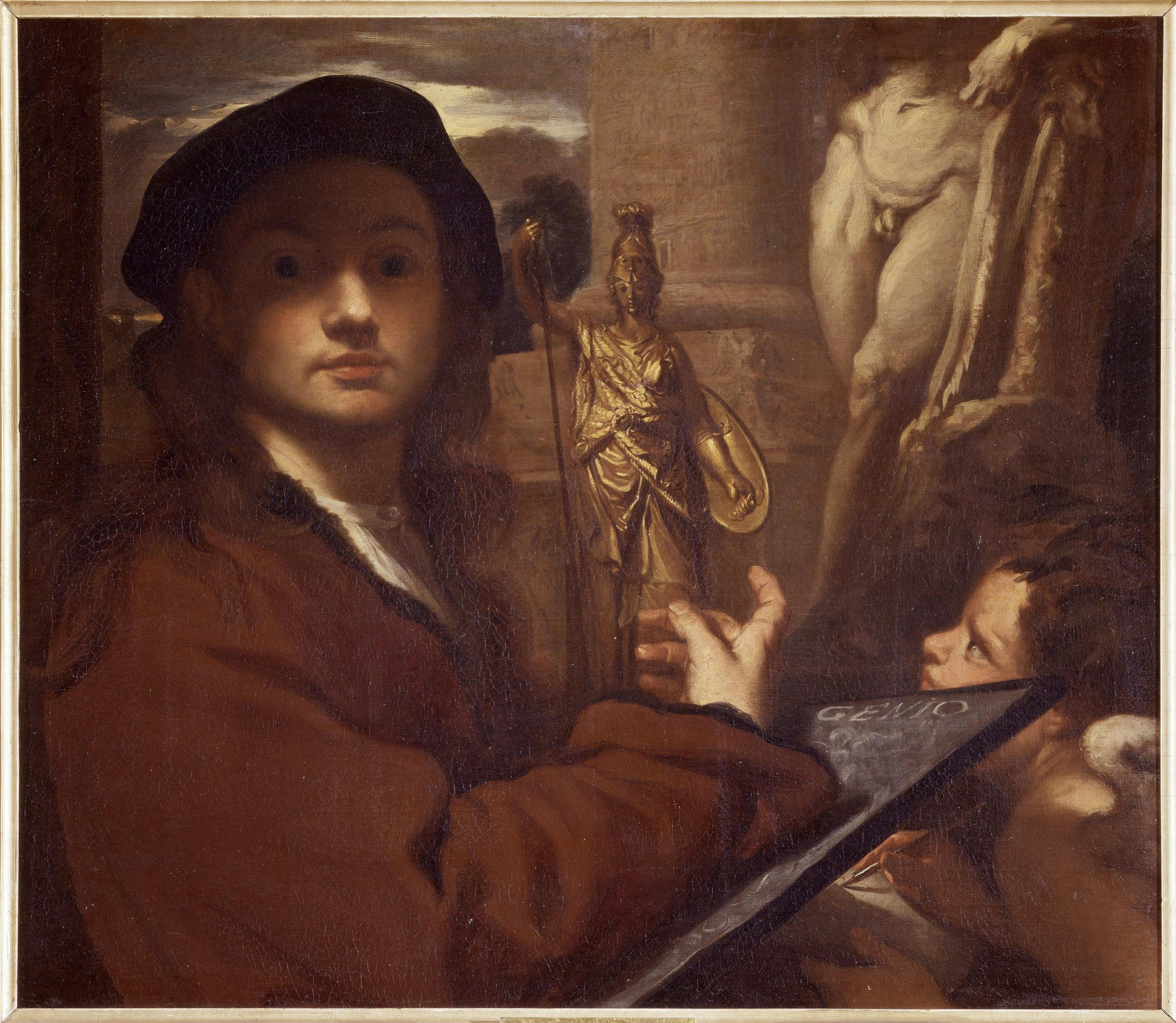The Genius of Sculpture
Livio Mehus (Oudenaarde 1627-Florence 1691)
Inscriptions: “GENIO”
The young man in the foreground, thought to be Mehus himself, shows the onlooker three famous antique sculptures behind him: a bronze version of a statue of Athena, Trajan’s Column, and the bottom part of a famous statue of Hercules at rest, known as the “Farnese Hercules”. The small spirit crowned with a laurel wreath in bottom left corner is focused on drawing them, and thus the whole scene serves to explain that only through the ceaseless and direct study of an aspiring artist is it possible to uncover the secrets of form and matter. This subject was very popular in the 18th century, linking back to the stoic themes of the finite nature of human destiny to which the immortality of the Genius - artist is counterposed.
The painting is one of the moralising subjects which Livio Mehus used in the 1650s, after a period in Rome spent studying the ancient world, together with Stefano della Bella, and also at the workshop of Pietro da Cortona. In his works from this period, including another canvas of the Genius of Painting, now in the Prada Museum in Madrid, or the Blind Man of Gambassi (private collection), the artist used all of his experiences from his travel and study between Venice and Rome, weaving together the taste for colour and rich tones of the Venetian painters with the airy classicism of Roman art.
